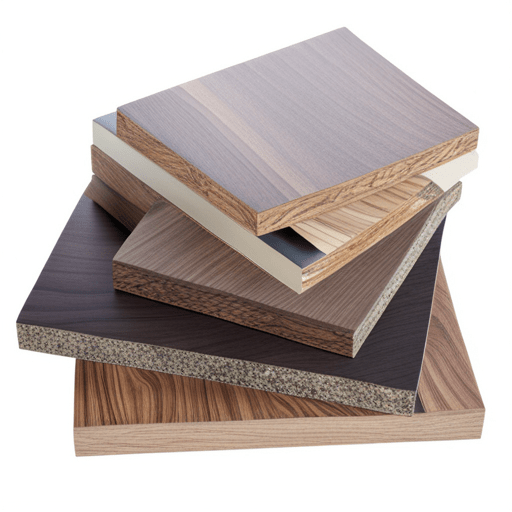Particleboard for Furniture: The Affordable, Versatile Choice for Interiors
Particleboard for furniture has become a top choice in manufacturing due to its affordability and suitability for interior applications. Made from wood particles and resin, particleboard is a durable and versatile alternative to solid wood and other engineered wood products. In this blog, we’ll explore the features, benefits, and uses of particleboard for furniture, focusing on why it’s a cost-effective and reliable material for modern designs.
What is Particleboard for Furniture?
Particleboard for furniture is created by compressing wood chips or particles with resin or adhesive under high heat and pressure. Manufacturers use wood chips from various timber species, including softwoods and hardwoods, to produce a uniform, dense board perfect for furniture production.
Why Choose Particleboard for Furniture?
- Cost-Effectiveness
Particleboard for furniture is much more affordable than solid wood or other engineered wood products. This makes it a top choice for budget-conscious consumers and manufacturers seeking high-quality, cost-effective solutions. - Uniform and Consistent Material
The manufacturing process ensures wood particles and resin are evenly distributed, creating a stable and uniform board. This makes particleboard easy to cut, shape, and join during furniture construction. - Design Flexibility
Particleboard’s versatility allows for a wide range of furniture designs. It can be easily cut, routed, and laminated, enabling intricate designs and decorative elements. Whether for cabinetry, shelving, or other interior components, particleboard for furniture offers unmatched design flexibility.
Applications of Particleboard for Furniture
Particleboard is ideal for furniture interiors, such as back panels, drawer bottoms, and cabinet frameworks. Its smooth, uniform surface works well with veneers, laminates, and paint finishes. Additionally, its dimensional stability reduces the risk of warping or cracking over time.
Environmental Benefits of Particleboard for Furniture
Particleboard is an eco-friendly option for furniture manufacturing. Many manufacturers use recycled wood waste or sustainably sourced wood chips, reducing the need for virgin timber. Furthermore, modern production processes minimize formaldehyde emissions, making it safer and more environmentally friendly.
Limitations to Consider
While particleboard has many advantages, it’s important to note its limitations. For instance, it’s susceptible to moisture damage, so avoid exposing it to water or high humidity. Additionally, it has lower structural strength compared to other wood-based materials, which may require reinforcement in certain applications.
Why Particleboard Stands Out
Particleboard is a versatile, cost-effective material widely used in interior applications. Its composition of wood particles and resin creates a uniform board suitable for various designs. Whether for residential or commercial spaces, particleboard offers an affordable and reliable solution without compromising quality.
Final Thoughts
Particleboard stands out due to its affordability, versatility, and eco-friendly nature. By choosing particleboard, you can create stylish, functional furniture without breaking the bank. Embrace its potential for your next project and discover how particleboard for furniture can transform your designs!


Can you be more specific about the content of your article? After reading it, I still have some doubts. Hope you can help me.